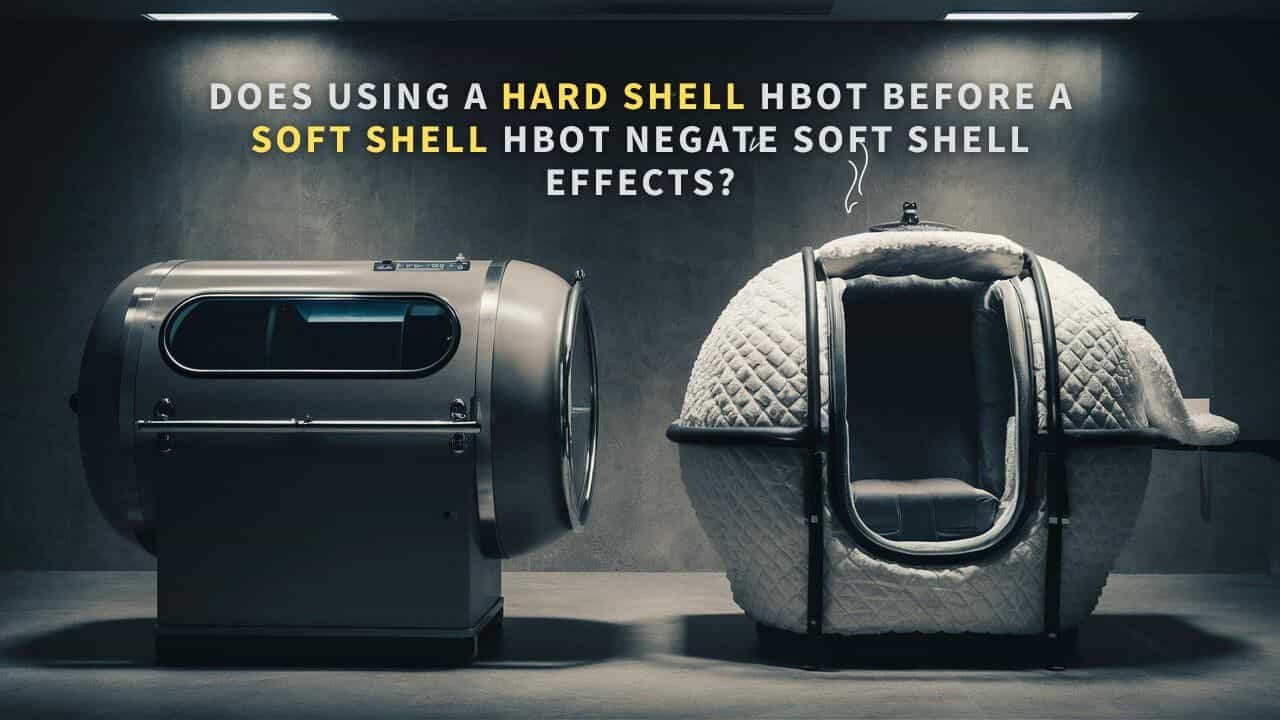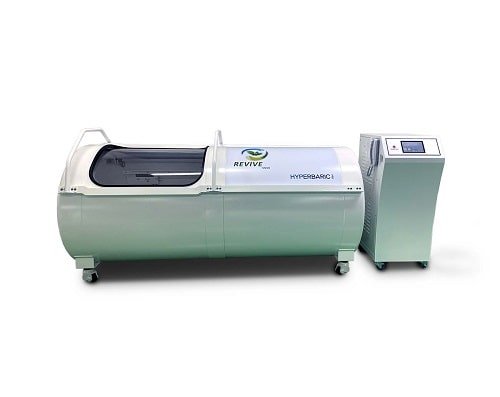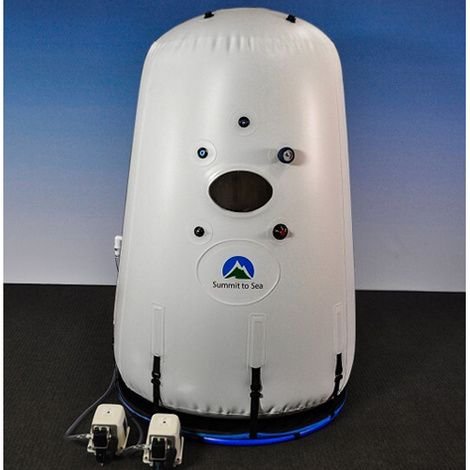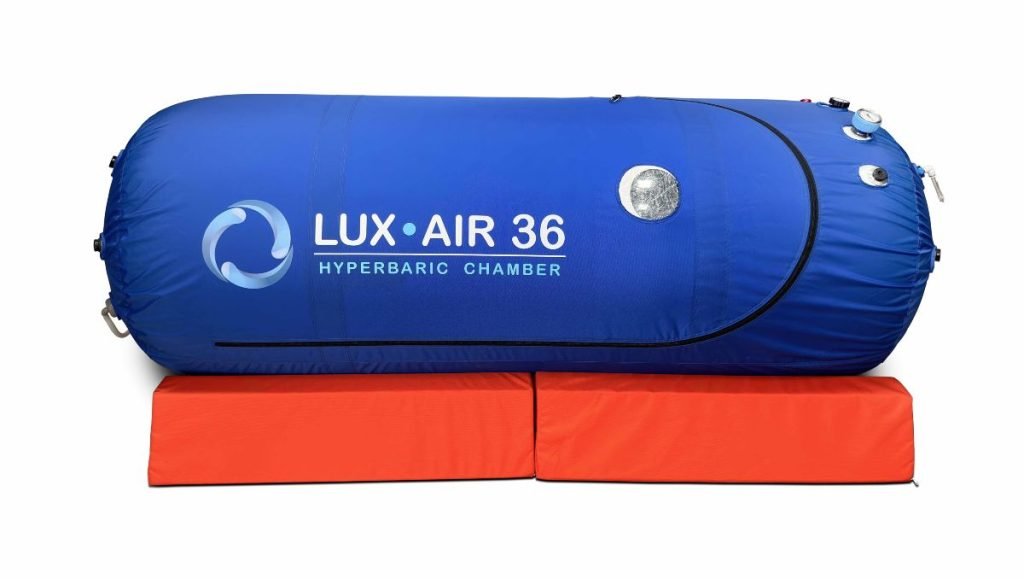Does Using a Hard Shell HBOT Before a Soft Shell HBOT Negate Soft Shell Effects?

Ever wondered if using a hard shell hyperbaric oxygen therapy (HBOT) chamber first can affect your treatment in a soft shell chamber later? This is a common question that many people struggle with.
The good news is, studies show that initial therapy in a hard shell chamber doesn’t “cancel” out the benefits of your following sessions in a soft shell chamber. But, you might need more sessions in the soft shell chamber to keep up the good results.
I’ll explain these findings in easy-to-understand terms. So, get ready to learn more about HBOT and how to get the most out of your therapy!
KEY TAKEAWAYS
- HBOT therapy benefits from a hard shell chamber are not negated when followed by therapy in a soft shell chamber.
- Switching from a hard to a soft shell chamber requires adjusting session numbers to maintain results.
- Both chamber types contribute to healing, despite different air pressure levels and oxygen concentrations.
- The lower pressure in soft shell chambers still promotes wellness and may slow aging, complementing prior hard shell therapy.
- Continuous therapy, regardless of the chamber type, is crucial for sustaining the benefits of HBOT.
Hard shell impacting soft shell HBOT benefits?
Switching from a hard shell Hyperbaric Oxygen Therapy (HBOT) chamber to a soft shell one doesn’t wipe out the benefits you’ve already gained.
But, it does demand more frequent sessions to keep up the results. The air pressure (ATA) in these two types of chambers is notably different.
However, it’s key to note that the lesser ATA in soft shell chambers doesn’t get rid of the healing effects seen in hard shell chambers with higher ATA. Instead, you’ll need to tweak the number of your sessions to match the results.
Starting a routine of two sessions daily, each lasting for an hour and a half, with a break of at least five hours between each session, is a good way to keep up the benefits of HBOT therapy when using a soft shell chamber.
This change is needed because soft shell chambers, while still helpful, give out oxygen at a lower pressure than hard shell chambers.
This schedule makes sure that the healing levels of oxygen in the blood are kept steady, which is vital for the healing process and the overall success of the treatment.
Hard shell vs soft shell HBOT differences
Knowing the key differences between hard shell and soft shell Hyperbaric Oxygen Therapy (HBOT) chambers can help you choose the right one for your needs.
Hard shell chambers are devices approved by the Food and Drug Administration (FDA) for medical use. [1]
They’re made of steel and create a space where 100 percent oxygen can be delivered at pressures higher than 2.0 Atmospheres Absolute (ATA).
These chambers are used for treating severe medical conditions effectively. They provide a sterile, or germ-free, environment that’s crucial for certain medical treatments.

On the other hand, soft shell chambers, also known as mild HBOT (mHBOT), are portable and can be sealed with a zipper.
They can reach up to 1.3 ATA and supply 24 percent oxygen levels. These chambers are designed for convenience and comfort, and they’re ideal for promoting wellness and slowing down aging, rather than for treating serious medical conditions.
They were first made for divers and climbers, and they can serve as a substitute for hard shell treatment when the latter isn’t immediately available.

The significant difference in oxygen concentration—100 percent in hard shells compared to 24 percent in soft shells—points out the unique purposes and benefits each chamber offers.
Here’s a comparison table based on the information provided:
| Feature | Hard Shell HBOT | Soft Shell HBOT (mHBOT) |
|---|---|---|
| Material | Steel | Rubber, seales with zipper |
| FDA Approval | Approved for medical use | Not FDA approved for medical use |
| Portability | Non-portable | Portable, easy to move around |
| Pressure | 2.0 ATA and higher | Up to 1.3 ATA |
| Oxygen Concentration | 100% oxygen | 24% oxygen |
| Environment | Sterile, germ-free | Not sterile |
| Purpose | Treating severe medical conditions | Promoting wellness, slowing aging |
| Convenience | Less convenient | More convenient and comfortable |
| Intended Use | Primary medical treatment | Substitute when hard shell not available, wellness |
ATA impacts on HBOT effects
The atmospheric pressure (ATA) level chosen during HBOT therapy directly influences how much oxygen your body can absorb.
As pressure increases, your body’s ability to deliver oxygen to tissues greatly improves, promoting more effective healing and better control of infections.
This oxygen absorption boosts the effectiveness of the therapy, particularly for the treatment of conditions caused by lack of oxygen, known as hypoxic conditions.
This process is based on a scientific principle called Henry’s Law. This law states that the amount of a gas that can dissolve in a liquid is directly related to the pressure of that gas. In simpler terms, the higher the pressure, the more gas can dissolve in a liquid. [2]
In the case of HBOT, this means that when the atmospheric pressure increases, the plasma, which is a liquid part of our blood, can hold more oxygen.

As a result, more oxygen is circulated around the body. This mechanism of increasing oxygen supply to the tissues which lack it’s crucial in treating hypoxic conditions. [3]
It works even when oxygen can’t be transported by red blood cells, which are the usual carriers of oxygen in our body. This increased absorption of oxygen is a key factor in the successful outcomes seen with HBOT.
When the air pressure is increased 2 to 3 times more than usual within an HBOT chamber, your lungs can collect a lot more oxygen.
This isn’t just a small increase; it’s a considerable enhancement in the amount of available oxygen. The increased air pressure allows your lungs to gather and distribute more oxygen into your bloodstream.
Why is this process important?
The quantity of oxygen your blood can carry directly impacts the efficiency of your body’s tissues and organs. By maximizing the delivery of oxygen, HBOT increases the oxygen levels in your body, paving the way for its therapeutic effects.
To put it simply, HBOT works by providing extra oxygen to tissues that need it.
This helps in healing and fights off certain infections. However, it’s important to know that too much oxygen can be harmful.
Risks alternating HBOT methods
There isn’t much direct evidence about the risks from switching between hard and soft shell HBOT chambers, but knowing the general side effects of HBOT can help us understand the potential issues.
The only scientific paper I could find on the risk of switching between hard and soft shell HBOT chambers is this one published in the journal Diving and Hyperbaric medicine that says “Switching between hard and soft shell HBOT chambers is not recommended due to potential risks of hypoventilation, carbon dioxide retention, and oxygen seizures”.
Keep in mind though that the paper suggests an immediate switch from 2.0 ATA to 1.3 ATA, implying a scenario where one might move between a hard-shell chamber at higher pressure and a soft-shell chamber at lower pressure, alternating oxygen levels frequently within minutes.
However, this is impractical in reality as no HBOT clinic would do that.. Even if you had it at home, there’s no reason doing it.
Having said that, my conclusion is that transitioning from HBOT treatment in a 2.0 ATA hard chamber to continuing treatment in a softer chamber with pressures of 1.3 or 1.5 ATA with a reasonable wait time of 72 hours (3 days) should not pose any issues.
Potential HBOT Side Effects
HBOT, no matter the type of chamber, comes with risks like barotrauma, oxygen toxicity, and myopia.
These risks can vary based on the health of the patient, the condition being treated, and specific elements of the therapy, such as pressure and how long it lasts.
When moving between hard and soft shell chambers, the main worry isn’t the switching itself, but making sure each session is customized correctly to your needs and closely watched to reduce risks.
The careful control of oxygen levels and how long sessions last is key to avoiding problems.
- For example, barotrauma is a result of changes in pressure and can be handled by modifying therapy plans.
- Oxygen toxicity, which is caused by too much exposure to oxygen, needs careful monitoring of the oxygen levels.
- Myopia, or temporary nearsightedness caused by oxygen exposure, usually goes away after the treatment is finished.
In short, while switching between HBOT methods doesn’t bring about new risks on its own, it’s very important to manage therapy elements with care to ensure safety and effectiveness.
Are Scientific studies applicable to soft chambers?
Most scientific studies examining the effectiveness of Hyperbaric Oxygen Therapy (HBOT) don’t directly apply to soft hyperbaric chambers.
This is due to the lower pressure capabilities of these soft chambers. To clarify, scientific studies on HBOT usually start at pressures of 1.5 atmospheres (ATA).
Soft chambers, on the other hand, can only reach a maximum of 1.3 atmospheres. This key difference matters because the health benefits observed in these studies are under conditions that soft chambers can’t replicate. This makes it difficult to compare their benefits accurately with those of the studies.
However, there are new findings that suggest soft chambers might be helpful in treating certain conditions, such as traumatic brain injury and stroke.
It’s also worth knowing that while soft chambers are used for certain treatments, hard shell chambers, which can reach and even surpass 2.0 atmospheres, are still the preferred choice in medical settings.
These hard shell chambers have been studied more extensively, and have shown to be beneficial for a variety of conditions. This supports their continued use in therapeutic settings.
In short, while soft chambers might’ve some potential, hard shell chambers, with their ability to reach higher pressures, are still the go-to option in medical treatments.
When to use hard vs soft HBOT?
Choosing between hard shell and soft shell Hyperbaric Oxygen Therapy (HBOT) treatments depends on the type of medical issue you have and how severe it is.
Your healthcare provider’s guidance is also important in this decision.
Hard shell chambers might be your best option if you’re dealing with a severe medical issue. These chambers can provide high levels of oxygen, making them a good fit for significant health problems that need strong treatment.
This may include issues like serious infections, injuries to deep tissue, or health problems that haven’t improved with regular treatments.
On the other hand, if your health issue is less severe or you’re looking for treatment for general wellness and preventive care, a soft shell chamber could be a better fit.
These chambers are known for being convenient and cost-effective. They provide a lower pressure environment, but they can still offer health benefits for some conditions without the high intensity of a hard shell chamber.
Conclusion
Switching from hard shell to soft shell HBOT doesn’t negate the benefits of soft shell therapy, but you’ll likely need more sessions to match hard shell results.
The key differences lie in atmospheric pressure levels, influencing therapy efficacy.
While both methods can be effective, deciding on one over the other depends on your specific health goals and conditions.
It’s essential to take into account scientific evidence and professional advice to optimize treatment outcomes, ensuring you’re using the right type of HBOT for your needs.
Want to learn more about Hyperbaric Oxygen Therapy? Check our HBOT resource page. Or, check the following recommended articles.

